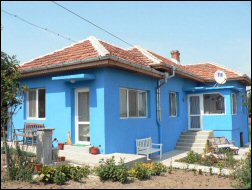Republic of Bulgaria
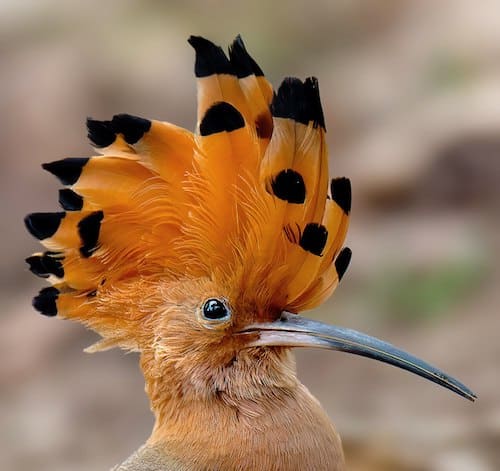
Bulgaria is a country in Southeast Europe. Located west of the Black Sea and south of the Danube river, Bulgaria is bordered by Greece and Turkey to the south, Serbia and North Macedonia to the west, and Romania to the north. It covers a territory of almost 111,000 square kilometres (c.43,000 square miles) and is the 16th largest country in Europe. Sofia is the nation’s capital and largest city; other major cities include Burgas, Plovdiv, and Varna. The most notable topographical features of the country are the Danubian Plain, the Balkan Mountains, the Thracian Plain, and the Rila-Rhodope massif. The southern edge of the Danubian Plain slopes upward into the foothills of the Balkans, while the Danube defines the border with Romania. The Thracian Plain is roughly triangular, beginning southeast of Sofia and broadening as it reaches the Black Sea coast.
The Balkan Mountains run laterally through the middle of the country from west to east. The mountainous southwest has two distinct alpine type ranges – Rila and Pirin, which border the lower but more extensive Rhodope Mountains to the east, and various medium altitude mountains to west, northwest and south, like Vitosha, Osogovo and Belasitsa. Musala, at 9,596 feet, is the highest point in both Bulgaria and the Balkans. The Black Sea coast is the country’s lowest point. Plains occupy about one third of the territory, while plateaux and hills occupy c.40%.Most rivers are short and with low water levels. The longest river located solely in Bulgarian territory, the Iskar, has a length of 368 kilometres (229 miles). The Struma and the Maritsa are two major rivers in the south.
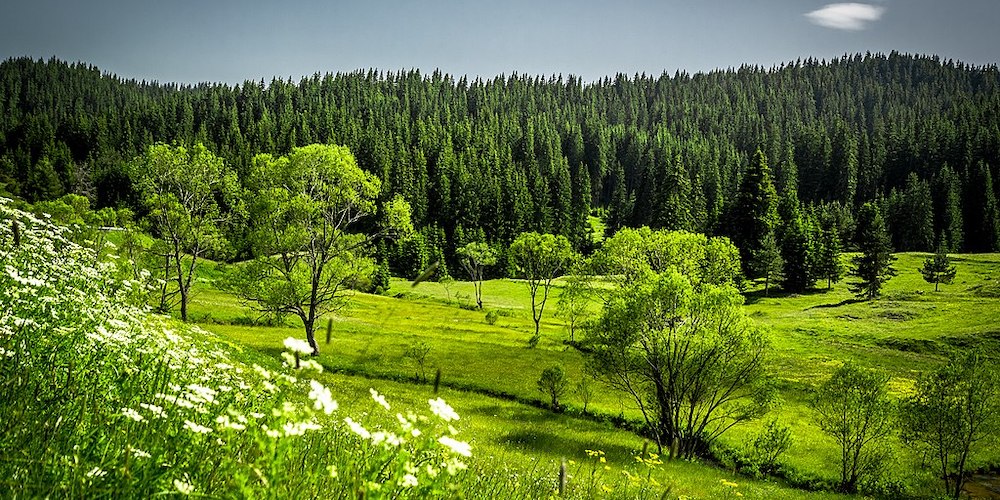
Rhodope Mountains – ©Нина Стайкова, CC BY-SA 4.0 via Wikimedia Commons
Considering its relatively small area, Bulgaria has variable and complex climate. The country occupies the southernmost part of the continental climatic zone, with small areas in the south falling within the Mediterranean climatic zone. The continental zone is predominant, because continental air masses flow easily into the unobstructed Danubian Plain. The continental influence, stronger during the winter, produces abundant snowfall; the Mediterranean influence increases during the second half of summer and produces hot and dry weather. Bulgaria is subdivided into five climatic zones: continental zone (Danubian Plain, Pre-Balkan and the higher valleys of the Transitional geomorphological region); transitional zone (Upper Thracian Plain, most of the Struma and Mesta valleys, the lower Sub-Balkan valleys); continental-Mediterranean zone (the southernmost areas of the Struma and Mesta valleys, the eastern Rhodope Mountains, Sakar and Strandzha); Black Sea zone along the coastline with an average length of 30–40 km inland; and alpine zone in the mountains above 1000 m altitude (central Balkan Mountains, Rila, Pirin, Vitosha, western Rhodope Mountains, etc.).
Northern Bulgaria averages 1 °C cooler, and registers 8 inches more precipitation, than the regions south of the Balkan Mountains. Temperature amplitudes vary significantly in different areas. The lowest recorded temperature is −38.3 °C, while the highest is 45.2 °C. Precipitation averages about 25 inches per year, and varies from 20 inches in Dobrudja to more than 98 inchesin the mountains. Continental air masses bring significant amounts of snowfall during winter.
Birding Bulgaria
The interaction of climatic, hydrological, geological and topographical conditions has produced a relatively wide variety of plant and animal species. Bulgaria’s biodiversity, one of the richest in Europe, is conserved in three national parks, 11 nature parks, 10 biosphere reserves and 565 protected areas. Ninety-three of the 233 mammal species of Europe are found in Bulgaria, along with 49% of butterfly and 30% of vascular plant species. Larger mammals with sizable populations include deer (over 100,000 individuals), wild boar (nearly 90,000), golden jackal (47,000 and red fox (32,000). Partridges number some 328,000 individuals, making them the most widespread gamebird. A third of all nesting birds in Bulgaria can be found in Rila National Park, which also hosts Arctic and alpine species at high altitudes. Flora includes more than 3,800 vascular plant species of which 170 are endemic and 150 are considered endangered. More than 35% of the land area is covered by forests.
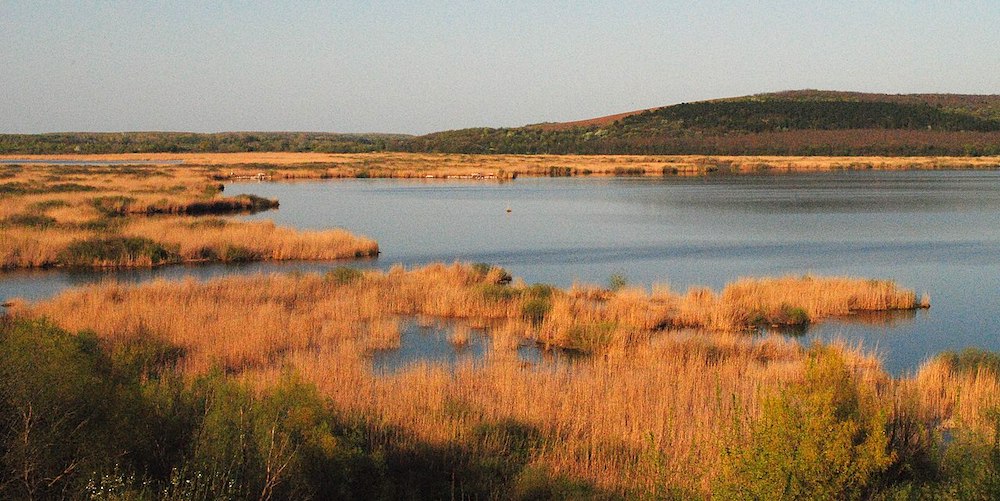
Srebarna Nature Reserve – ©Zhivko77, CC BY-SA 4.0 via Wikimedia Commons
Over the last twenty years or so birding has really taken off in Bulgaria, but this is not really surprising when one considers the species that can be seen in this birding paradise. There are over 200 Dalmatian Pelicans in the colony at the Srebarna UNESCO reserve, which is the biggest European colony, Red-footed Falcons (over 500 pairs); over 20 pairs of Eastern Imperial Eagles, over 800 pairs of Pygmy cormorant, over 100 pairs of Ferruginous Duck, and more than 50 pairs of Ruddy Shelduck. The country is dotted with fishpond systems and many small and bigger rivers, where Savis Warbler, and Penduline Tit are common, and herons and egrets easily seen.
The chain of the Central Balkan National Park, Pirin and Vitosha mountains National Parks, Rila mountain with many mountain reserves, Rhodope mountain and in the far South east Strandza mountain National Park and the local reserves, with their perfect woods and huge cliffs give great opportunities for raptors. These include Eastern Imperial, Golden, Booted, Short-toed, and Lesser-spotted Eagles and Saker. The lower parts of the mountains and the whole of the rest of the country is good for Long-legged Buzzard, Levant Sparrowhawk, Red-footed Falcon, Montegu’s Harrier, Honey Buzzard, Egyptian, Black and Griffon Vultures, White-tailed Eagle, and Black and White Stork. Bulgaria is also the best place in the World for seeing Wallcreeper, the biggest European populations of Sombre Tit, Masked and Lesser Grey Shrikes, Short-toed Treecreeper, Olive-tree and Paddyfield Warblers, Spanish Sparrow, Semi-collared Flycatcher, Black-headed & Rock Buntings, Black-headed Yellow Wagtail, Golden Oriole, European Roller, European Bee-eater, Hoopoe, Rose-coloured Starling, Rock Partridge, Pied, Isabelline and Eastern Black-eared Wheatears, Corncrake, Syrian Woodpecker, Calandra and Short-toed Larks.
Many rare European species, like Pallid Swift, Little and Spotted Crakes, Stone-curlew, Collared and Black-winged Pratincoles, Gull-billed and Caspian Terns, White Pelicans, Eagle Owl, Ural, Scops, Pygmy and Tegmalm’s Owls, Shore Lark, Rock and Blue Rockthrush, Sub-alpine, Barred, Sardinian and Orphean Warblers, Nutcracker, Rock Sparrow and Dotterel are relatively easy to find. In almost every wood and the open area there are Black, Green, Grey-headed, Middle-spotted, Great-spotted, and Lesser-spotted Woodpeckers. High in the mountain are Three-toed woodpecker. There is a good chance of the rare White-backed Woodpecker, as well as Syrian Woodpecker and Wryneck in the open areas.

The best time to visit is spring, with, on average, 220-230 species, including many rarities, but birding in autumn is also good, especially for large raptor migration, pelicans, and waders. There are huge numbers of birds every autumn with Honey Buzzards (6000+); Levant Sparrowhawk (100+); Common Buzzards (20,000+); Booted Eagle (100); Lesser-spotted Eagles (10,000+); Short-toed Eagles (400+); Pallid Harriers (15); Hobbys (70+); Red-footed Falcons (1000+); White Storks (over 130,000); Black Stork (3000+); White Pelicans (20,000+); Dalmatian Pelicans, and many other rare and interesting birds such as thousands of wagtails, swallows, pipits, and larks etc.
Bulgaria is one of the best European countries for birding in winter, as it holds thousands of Red-breasted and White-fronted Geese, a very good chance of Lesser Ehite-fronted Geese and rare European ducks. Good numbers of White-headed Duck (over 300); Smew, Dalmatian Pelican, Great White Egret, Whooper and Bewick’s Swans, Rough-legged and Lon- legged Buzzards.
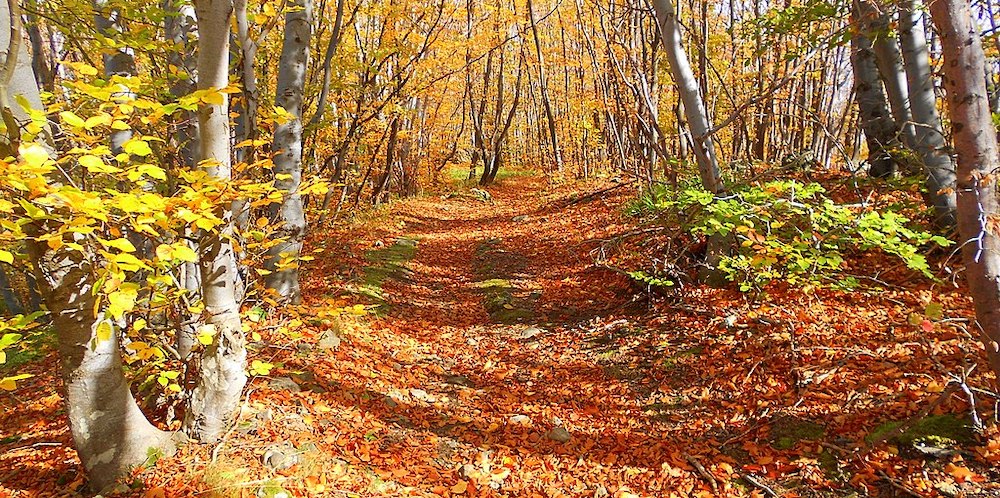
Vitosha Nature Park – ©Tanasy, CC BY-SA 4.0 via Wikimedia Commons
Bulgarian landscape is very variable. The plains and marshes of the Danube and Maritsa Rivers and Black Sea coast give a great possibility of getting all the European herons, as well as Spoonbills and Glossy Ibis, Little Bittern breed. Even the forest in the centre of Sofia – the Bulgarian capital, gives perfect opportunities for birding, and Vitosha mountain National Park is just a few minutes by car from Sofia. The dozens of reserves in the country and also many unprotected areas with their variety of landscape, birds, plants insects etc, in a small country such as Bulgaria, mark it out as a leading European country for birding.
The climate is typically continental in Northern Bulgaria and Dobrudza region, which means warm summers and cold winters. Along the Black Sea coast the winter is not so severe and the summer is not so hot. In the high mountains the climate is typical with long and cold winter and shorter spring and summer. Along the southern border with Turkey and Greece the Mediterranean influence is tactile. One of the most important sources of foreign income in Bulgaria is tourism and so most of the country is geared up to receiving and looking after visitors and that includes birders. Food, and drinks are cheap and accommodation is very reasonable. Yet, many regions of Bulgaria are still rather under developed with farmland that still hosts good numbers of birds.
-
Nikolay Dilchev
| pandiond@einet.bg
https://www.birdwatchingholidays.com
-
Number of bird species: 432
(As atMarch 2025)
-
Avibase
PDF ChecklistThis checklist includes all bird species found in Bulgaria , based on the best information available at this time. It is based on a wide variety of sources that I collated over many years. I am pleased to offer these checklists as a service to birdwatchers. If you find any error, please do not hesitate to report them. -
Birds in Bulgaria
Annotated ListAnnotated List with photos, calls etc -
Wikipedia
Annotated ListThis list of birds of Bulgaria includes all bird species which have been seen in the country. This list's taxonomic treatment (designation and sequence of orders, families and species) and nomenclature (common and scientific names) follow the conventions of The Clements Checklist of Birds of the World, 2022 edition. The family accounts at the beginning of each heading reflect this taxonomy, as do the species counts found in each family account. Introduced and accidental species are included in the total counts for Bulgaria. It includes 436 bird species. -
eBird
PDF ChecklistThis checklist is generated with data from eBird (ebird.org), a global database of bird sightings from birders like you. If you enjoy this checklist, please consider contributing your sightings to eBird. It is 100% free to take part, and your observations will help support birders, researchers, and conservationists worldwide.
-
Atlas of Breeding Birds in Bulgaria
Edited by Petar Iankov | Bulgarian Society for the Protection of Birds | 2007 | Hardback | 680 pages, b/w illustrations, b/w distribution maps | ISBN: 9789549142174 Buy this book from NHBS.com -
Birds of Europe, North Africa, and the Middle East
| Photographic Guide | By Frédéric Jiguet & Aurélien Audevard | PUP | 2017 | Paperback | 447 pages, 2200 colour photos, colour distribution maps | ISBN: 9780691172439 Buy this book from NHBS.com -
Bulgaria Bird Checklist
Names in English, Latin and Bulgarian. With an indication of rare, occasional or introduced species. More than 400 species. ISBN: ASIN : B0BQ9HN8HC Buy this book from NHBS.com -
Collins Bird Guide
| By Lars Svensson | Harper Collins | Edition 3 | 2023 | Paperback | 478 pages, 4000+ colour illustrations, 700 colour distribution maps | ISBN: 9780008547462 Buy this book from NHBS.com -
Finding Birds in Bulgaria
by Dave Gosney | Easybirder | 2010 | Paperback | 35 pages, b/w maps | ISBN: 9781907316128 Buy this book from NHBS.com -
Finding Birds in Eastern Bulgaria
by Dave Gosney | Easybirder | 2019 | Paperback | 40 pages, b/w maps | ISBN: 9781907316593 Buy this book from NHBS.com -
Where to Watch Birds in Bulgaria
By Peter Iankov & G Pchelarov | Pensoft Publishers | 1996 | Paperback | 179 pages, 40 line drawings, maps | ISBN: 9789546420114 Buy this book from NHBS.com

Collins Bird Guide
AndroidThe Collins Bird Guide App provides everything you need to identify a species quickly and learn about it thoroughly.
Collins Bird Guide
Apple iOS |Collins Bird Guide 4+ A field guide to Europe NatureGuides Ltd. Designed for iPadOrganisations-
Balkani Wildlife Society
WebsiteBALKANI Wildlife Society is a non-profit organisation, working for the public benefit. The main aims of the Society are study, conservation and restoration of flora and fauna in natural ecosystems, their preservation for future generations and raising public awareness on the problems of nature conservation -
Bulgarian Society for the Protection of Birds
WebsiteIn the BSPB we work for the conservation of wild birds, the areas important for them and their habitats. We defend the right of existence of wildlife and thus we contribute for the sustainable use of natural resources, as well as for the well-being of mankind. In the BSPB we work for the people too: we defend the public interest and everybody’s right to a preserved nature and a healthy environment. -
Le Balkan-Bulgaria
WebsiteIn 1998 a partnership between Swarovski Optik, "Le Balkan-Bulgaria" Foundation and Branta-Tours Birdwatching (www.branta-tours.com) company was established with the main goal of improving the breeding conditions in the Dalmatian Pelican colony at the Srebarna Biosphere reserve and to ensure the survival of the Pelicans. As a result of this fro! m 1998 to 2003 a team from Le Balkan (www.lebalkan.org) implemented several very important measures and management techniques at the site. The result of these measures was that the pelican colony was protected from extensive flooding and predators. We obtained authorisation for implementation of this project from the Bulgarian Ministry of Environment and Water through the established written agreement. In parallel, a joint monitoring programme between Le Balkan-Bulgaria and the "Station biologique de la Tour du Valat" has been running in Srebarna Dalmatian Pelican colony. This work is included in an international research and conservation program on the species.
Reserves-
Bulgaria National Parks
InformationSatellite ViewAn interactive list of all the protected areas in Bulgaria -
NP Pirin
InformationSatellite ViewPirin National Park is located in the Pirin Mountains, in southwest Bulgaria. The park includes seven municipalities in the district of Blagoevgrad: Bansko, Gotse Delchev, Razlog, Sandanski, Strumyani, Kresna, and Simitli…. -
NR Bourgas Wetlands
InformationSatellite ViewThe main goal of the Project is to establish a sustainable working structure, which will continue to manage and protect these important wetlands after the Programme and the Project are over. All governmental and non-governmental organisations, the business and the public at large should find their proper place and role in this structure to help it perform in the best possible way its functions of safeguarding the protected areas in the region… -
NR Djendem
InformationSatellite ViewMany rare wildlife species have found their last refuge in this impenetrable natural forest, which is home to an unusual community of Siberian juniper, myrtle-leaf rhododendron and blueberry, as well as the only known location of Urumov’s campion in the world. The Northern Djendem is home to the Balkan chamois (alpine goat), brown bear, grey wolf, red deer, roe, golden eagle, peregrine falcon, and wallcreeper. -
NR Srebarna
InformationSatellite ViewThe Srebarna Nature Reserve (Bulgarian: Природен резерват Сребърна, transliterated as Priroden rezervat Srebarna) is a nature reserve in northeastern Bulgaria (Southern Dobruja), near the village of the same name, 18 km west of Silistra and 2 km south of the Danube. It comprises Lake Srebarna and its surroundings and is located on the Via Pontica, a bird migration route between Europe and Africa. -
Wetlands
InformationSatellite ViewBulgaria currently has 11 sites designated as Wetlands of International Importance (Ramsar Sites), with a surface area of 49,912 hectares.
Sightings, News & Forums-
eBird
SightingseBirding This Month
Guides & Tour Operators-
Birds, Wildlife & Nature
Tour OperatorWe offer one of the most exciting winter tours in Europe. From Northern Bulgaria to some of the best birding sites along the Black Sea Coast and Danube Delta of Romania. -
Birdwatching Bulgaria
Tour OperatorBirdwatching is a passion, an ardour unifying in a very special society tens of millions of people each year who have been seized with love about birds! No wonder that birding is among the fastest-growing outdoor activity worldwide. It is a real delight, which could be practiced generally everywhere - in your own yard, in the park, among the buildings in the cities and even through the windows of the car when traveling! -
Branta Tours
Tour OperatorBranta-Tours is a Bulgarian wildlife and especially birdwatching company, which operates tours to the most important birding locations in Bulgaria. We also focus on flowers, butterflies, dragonflies, reptiles and mammals (including marine species), as well as other fascinating features on most of our trips. Branta-Tours is equipped with Swarovski optics to help ensure the best possible birding experience for your trip -
British Bulgarian Society
Website…hover over the images to see the names and dates of the tours, then click on one to see its itinerary, details and price… -
Iordan Hristov - Independent Guide
WebpageBirding around Sofia can be rather productive for half a day or a full day depending upon your time availability. The area around the capital is rich in birdlife especially in spring. Depending upon your interest we can visit a variety of habitats and aim for good diversity of birds. Contact Iordan mailto:biomonitoring.ltd@gmail.com -
Nature Travel
Tour OperatorBirdwatching in Bulgaria becomes incredibly popular in the last several years. The area "Suha reka" offers fantastic opportunities for birdwatching. There is an immense variety of habitats ranging from wetlands, dry steppe, cliffs and gorges, grassland, arable land, orchards, woodland, etc. The specific landscape features have defined large diversity of birds. At the moment are registered nearly 200 species and over 25 of them are birds of prey. Amongst the highlights are Ruddy Shellduck, Pallid Harrier, Lesser-spotted Eagle, Levant Sparrowhawk, Long-legged Buzzard, Stone Curlew, Common Crane, Syrian Woodpecker, Alpine Swift, Eagle Owl, Sombre Tit, Thrush Nightingale, Golden Oriole, Wryneck, Barred Warbler and many others. European Bee-eaters, Red-backed Shrikes and Rollers are very common birds in Spring and Summer… -
Neophron Tours
Tour OperatorSpring tours in the richest and most attractive bird areas in the country, including the Rhodopes, Pirin, Rila and Central Balkan mountains; the Black Sea coast with amazing wetlands and steppes, the wetlands and forests along the Danube river, etc… -
Pandion Birdwatching Holidays
Tour OperatorTour company which specialises in birdwatching tours to Bulgaria - the site has some very nice photographs of special birds of the area. Visiting our site you will know about one of the most interesting countries in the world situated in Europe - Bulgaria. Superb nature. Unique finds, Orthodox cloisters, folklore and traditions. Run by Nikolay Dilchev who is licenced to run such tours - beware, other tours may NOT cover you if things go wrong! -
Probirder
Tour OperatorTen Good Reasons to Visit Bulgaria - Dalmatian Pelican, Ruddy Shelduck, Black Vulture, Long-legged Buzzard, Levant Sparrowhawk, Slender-billed Gull, Red-rumped Swallow, Pied Wheatear, Semi-collared Flycatcher, Black-headed Bunting -
Traventuria Wildlife Photography Tours
Tour OperatorTraventuria’s responsible travel policy to provide great journeys in supreme wildlife habitats and connect international travelers with local communities to guarantee sustainability and harmony between men and nature. We are specialized in birdwatching and wildlife photography tours. -
Via Pontica Tours
Tour OperatorOn the crossroad between Europe and Asia, Bulgaria is one of the best European birdwatching destinations. For the moment in the country have been recorded more than 400 birds species -
Wild Echo
Tour OperatorBulgaria has more than 415 bird species, of which 267 breed here. In the summer it is the best places to see species such as the Olive-tree and Paddyfield warblers, Semi-collared Flycatcher, Isabelline and Pied wheatears, Masked Shrike, Black-headed Bunting, Levant Sparrowhawk and the Long-legged Buzzard. Many other rare or hard to find species are easy to observe here - the Rock Partridge, the Barred Warbler, the Rock Nuthatch, the Scops Owl, and woodpeckers are just a few. Bulgaria is definitely the best place in Europe to watch the Wallcreeper…
Trip Reports-
2015 [05 May] - Nikolay Dilchev
PDF ReportAnnotated list -
2015 [05 May] - Richard Webb - Southwest Bulgaria
PDF Report...Whilst I missed a few species, e.g. Levant Sparrowhawk, Western Rock Nuthatch and Olive-tree Warbler, that I would have liked to have seen given that it is almost 30 years since I last saw them, all-in-all it was an extremely enjoyable trip. -
2015 [05 May] - Wingspan
PDF ReportBlack-headed Buntings were everywhere as well as the common Corn Bunting. Calandra Larks gave good views whilst they sang on the wing or perched nearby. A good number of both Spanish and Tree Sparrows flitted about and we listed both Isabelline and Northern Wheatears. -
2015 [05 May] - Wingspan
Report...We notched up some species on the first part of the trip, Hooded Crow, Common Buzzard, Barn Swallow and Crested Lark. After a quick stop in Pazardzhik to buy lunch supplies we stopped just outside the town for our first birding session of the tour. -
2015 [06 June] - Chris Gibson - Western Rhodopes
PDF Report...After dinner, we were treated to a visit by the ‘Yagodina Grannies’, a local folk song and dance troupe, their numbers swelled this year by a young bagpipe player. But no takers for the opportunity to dress in local costume and join in. -
2016 [03 March] - David Karr - Northeast and Vitosha Mountain
PDF ReportThe Easter weekend break was a perfect opportunity to visit Bulgaria for some sightseeing andbirding. Our focus was the northern Black Sea coast and the Danube River marshes nearSilistra/Srebarna. The country scores high marks for historical interest, affordability, and the chanceto easily see some of Europe’s less common birds: Dalmatian Pelican, Pygmy Cormorant, LongleggedBuzzard, Black Woodpecker, Black Stork, etc. -
2016 [03 March] - David Karr - Northeast and Vitosha Mountain
PDF ReportThe Easter weekend break was a perfect opportunity to visit Bulgaria for some sightseeing and birding. Our focus was the northern Black Sea coast and the Danube River marshes near Silistra/Srebarna. The country scores high marks for historical interest, affordability, and the chance to easily see some of Europe’s less common birds: Dalmatian Pelican, Pygmy Cormorant, Long-legged Buzzard, Black Woodpecker, Black Stork, etc. -
2016 [05 May]
PDF ReportFurther along the journey we stopped to look for Wryneck, instead we found Golden Oriole, Isabelline Wheatear, Lesser Grey Shrike and more Common Buzzards. Another impromptu stop was made to look at Souslik, a small hamster-like rodent and just after that we found a beautiful European Roller on a roadside fence and another Isabelline Wheatear. -
2016 [05 May] - Iordan Hristov
PDF ReportAfter we enjoyed the riverside birding we headed towards an abandoned quarry. Along the road we logged our first Roller which was rather obliging and sat nicely on the wires to be scoped. Just before we arrive in an abandoned quarry we had wonderful views of the Black-headed Bunting, Corn Bunting, Calandra Larks and Black-headed Yellow Wagtail. Once we stopped we looked at a Long-legged Buzzard which was sitting at its usual position. Here we also noted a Black-eared Wheatear, Woodchat Shrike, Spanish Sparrow with well marked black chest and Short-toed Eagle. A small group of Rose-coloured Starling flew over but too fast so not everyone managed to see them. -
2016 [05 May] - Sándor Borza - Danube Delta & Dobrudja
PDF Report...It was a really enjoyable trip with a lot of quality birding and simply just lots of birds everywhere! We recorded a total of 183 species during this 8 days trip (with 6 and a half days of actual birding) and only four of them were heard only... -
2016 [05 May] - Wingspan
Report...After breakfast we set off for the Trigrad Gorge passing through some magnificent scenery along theway, we saw Dipper, Grey Wagtail, Eurasian Jay and Cirl Bunting from the bus. At the gorge we hit alow point on our 'roller-coaster' or more appropriately 'big dipper' as we dipped big time on our maintarget bird, WALLCREEPER.... -
2016 [06 June] - Tim Strudwick - Western Rhodopes
PDF ReportBears are a hard act to follow, but the sun came out and with it plenty of butterflies including Glanville, heath and pearl-bordered fritillaries and mazarine blue (all visiting what Vlado felt was probably polecat scat), and a broad-bodied chaser was hawking along the stream. A quail started calling in the stream-side meadow. -
2016 [07 July] - Iordan Hristov
PDF ReportWe continued along a quiet lane stopping now and then and saw our first Lesser Grey Shrikes which were rather noisy and active. A big group of 20+ Grey Partridges walked right by the road giving us great views and photographic opportunities. For the next half an hour we logged Isabelline, Northern and Black-eared Wheatears. A Little Owl sat nicely for us to enjoy on a concrete wall and a Long-legged Buzzard sat quiet for a while when it dropped on the floor to get a prey. Soon we exhausted the place and moved location. -
2017 [-02 February] - https://fatbirder.com/wp-content/uploads/2020/11/customized-birding-trip.pdf
PDF ReportSometimes we did have long hours in the hide with no birds but used to time to catch up with reading or taking pictures of Ravens which gathered in their tens. Some of the birds had rings so it was interesting to study the birds. -
2017 [01 January] - Iordan Hristov
PDF ReportOn the way to the Rhodopes, we made a quick stop for Pygmy Cormorants which roost in their thousands just a few km off the motorway. We took the chance because the species was of interest and soon we got our shots with backlight from the setting sun. A Crested Lark made a show right by our van and another tick for one of the guests -
2018 [05 May] - Jonathan Lethbridge - Bulgaria & Romania
PDF ReportThis is a trip report about an unashamedly photographic trip to Eastern Europe -Romania and Bulgaria. I'd birdedthe Black Sea coast of Bulgaria before, about six years, and vowed to go back as it was simply outstanding. For many reasons I had not managed it until now -it was once again so good that I am trying to find an excuse to go back -
2019 [02 February] - Chris Lotz
PDF ReportThis Winter Birding Wonderland Bulgarian tour takes in essentially the best of Bulgaria, as we visit the many important bird wintering sites along the Black Sea, along with exploring various woodlands and mountains that play host to some of Europe’s most sought-after species. All these combine for a short, well-rounded tour that is not to be missed. -
2019 [02 February] - Dylan Vasapolli
PDF ReportThis private tour followed the exact route of our winter set-departure tour, taking place directly preceding it. The tour began in the coastal town of Varna, from where we spent a few days exploring the northern Bulgaria Black Sea region, before transferring to the large port town of Burgas. Here we spent time birding the southern Bulgarian Black Sea region, including the Strandzha mountain massif, before transferring inland to the capital, Sofia, where the tour concluded on the snow-covered Vitosha mountain. -
2019 [05 May] - Ed O’Hara
PDF ReportHaving had such a brilliant trip in May 2018, Comghal and I decided to return to Bulgaria but this time put the emphasis on the mountains and forests for several 'lifers' that we were both seeking. -
2023 [09 September] - Gerard Gorman
PDF ReportAnnotated list
Places to Stay-
Branta Birding Lodge
AccommodationBranta Birding Lodge & Conservation Centre, overlooking Durankulak Lake and Black Sea, is ideally situated for visiting many top birding locations, endless and peaceful white-sand beaches, important protected areas and many sites of archaeological interest along those remote parts of the Bulgarian Far North that have avoided the construction boom. -
Pelican Birding Lodge
AccommodationPelican Birding Lodge is located in the village of Vetren, close to the town of Silistra. Vetren is situated two kilometers from the River Danube, and close to the internationally important nature reserve at Lake Srebarna, a UNESCO heritage site. The environs along the Danube attract a wide range of birdlife throughout the year. Lake Srebarna is world-famous for a colony of world-threatened Dalmatian Pelicans, and many other interesting and rare species which prefer a wetland habitat… -
Pelican Lake Guesthouse
AccommodationPelican Lake Guesthouse Srebarna offers a setting approximately a 25-minute walk from Natural-Science Museum and Preserve. Kranevo is 116 km from the guest house.
Other Links-
Birdwatching Bulgaria
WebsiteA rough guide to birdwatching in Bulgaria… -
Bulgarian Nature on My Doorstep
WebsiteA collection of nature and landscape images from South West Bulgaria -
Nature Monitoring
WebsiteNature Monitoring is a consultancy company established with the aim to conserve Bulgarian nature. The services of the company include: biodiversity surveys, research, training, birdwatching and wildlife tours guiding, PR companies consultation, preparation of information materials on environmental subjects, etc.
Blogs-
Nikola Aleksandov - Bird Ringing in Bulgaria
BLOG
Fatbirder - linking birders worldwide...
Skip to content
